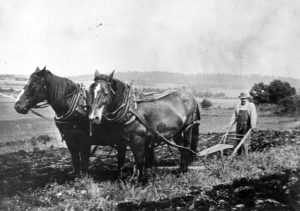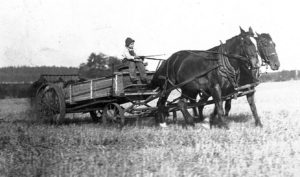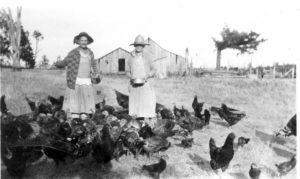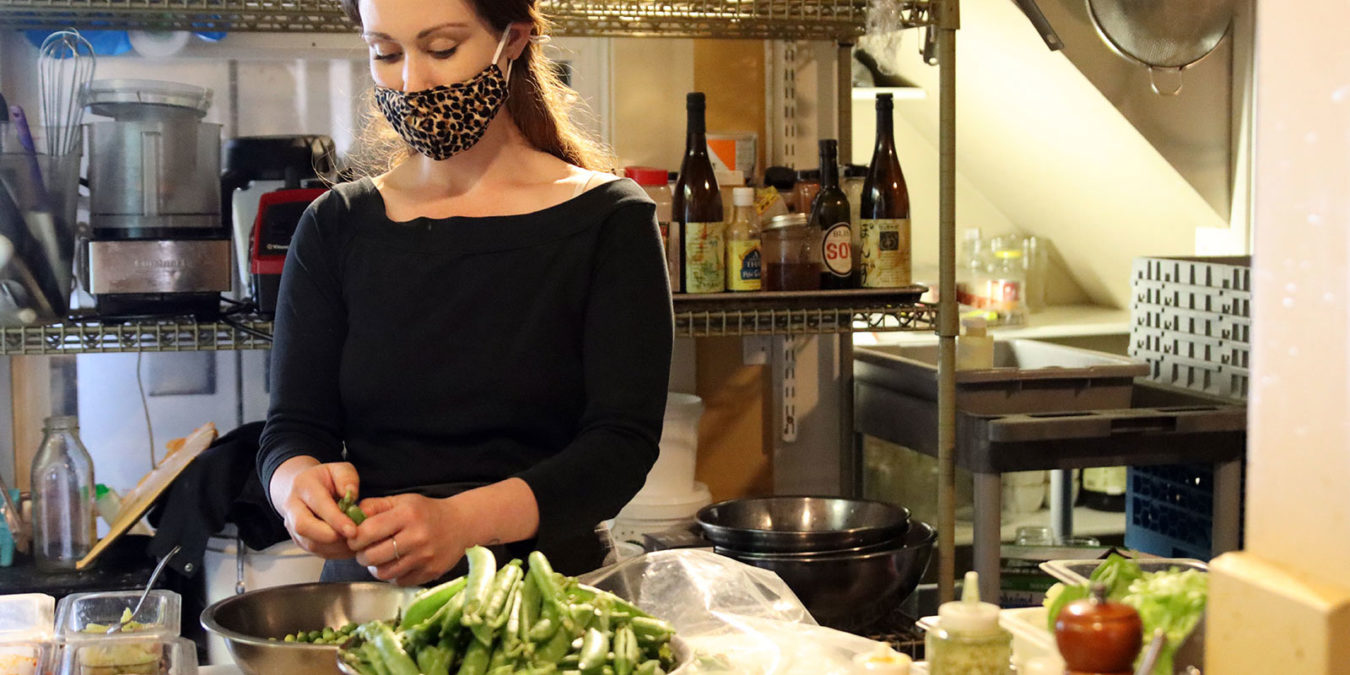
By now, it’s no secret: Being in the rainshadow of the Cascades to the east and the Olympics to the south, the San Juan Islands enjoy high sunshine and less rain compared to the mainland. It’s great for vacation get-a-ways, but also a boon for farmers.
According to agricultural historian Boyd C. Pratt, even the Native Americans practiced some forms of agriculture including camas cultivation (a nutritious bulb that tastes something like a sweet potato and was pounded into flour) and skexe (wool dogs bred specifically for their fur.) Euro American methods of farming began in 1853 with the arrival of the Hudson Bay Company, who brought with them sheep, cows, horses and swine, along with the seeds for potatoes, oats, peas, turnips, and wheat.

Boyd tells us that the typical homestead farm during the 1870s to 1900 was 160 acres or less and consisted of a log cabin residence with a cluster of roughly-built out buildings for farm operations. Usually a small plot of land, 7 or 8 acres, was planted in peas, potatoes, turnips and vegetables, while a larger field of 40 to 60 acres was “cleared, grubbed, ploughed, harrowed, and then planted in timothy for pasture.” A small orchard was also common. In fact, you can still see the remains of the orchard planted by the British troops at English Camp National Historic Park.

Sheep, raised for breeding, meat, and wool have always been a major farm commodity on the island, and still constitute the largest number of flocks per county in Western Washington. Barley, oats, wheat, and dry peas grew well in the wetter soils on the island along San Juan Valley and Beaverton Valley roads. Oats and peas were cut with cradles (scythes with teeth-like attachments for laying grain in bunches as it was cut), and grain was threshed with horses. But the introduction of the steam threshing machine changed all that in 1876. “Threshing of grain was a community effort, and steam threshers were hauled from farm to farm or even barged over from other islands. Crews of men from surrounding farms would meet at the fields to be threshed, and farm wives would vie with each other to provide ample lunches for the workers.”


Though early farmers planted fruit on their homesteads, the market for county fruit was difficult, due to transportation of the fragile products. But that didn’t stop intrepid island farmers. San Juan Historical Museum director Kevin Loftus notes that San Juan County entered apples, cherries, plums, and pears at the Alaska Yukon Pacific Expo of 1909; the cherries garnered “best in the State.” County growers boasted of the local fruit with their “Four Pears to Foot” poster, featuring fruit that looks as beautiful as anything sold today.
Of course, practically every homestead had a dairy cow or two, but by the late 19th century, dairy cattle numbers increased and “dairying became an important element in the agricultural landscape of San Juan island.” Boyd mentions that a creamery was established in Friday Harbor in 1901, and “three years later the local newspaper reported that 3,000 pounds of cream had been converted to 1,000 pounds of butter in one day, and that the Friday Harbor creamery was so busy it had to introduce a night shift to run 24 hours a day.” Now we have two dairies on the island, Heritage Farm producing raw caw’s milk, and Quail Croft that produces goat milk products.
Dry peas were long a farm staple, but peas for canning were introduced in 1922, followed by the “Saltair Peas” cannery in Friday Harbor. The crops were abandoned in 1940 when the “pea weevil” attacked the plants; they were revived in 1956 by George Jeffers and his associates, who operated the Friday Harbor Canning Company. They grew peas on 450 acres, but this time chemical pesticides were employed – even dust cropping by airplane. The last peas from this farm were harvested in 1966.
Certainly there were other products produced for market, including ginseng, hops, rhubarb, seeds, swine, poultry, and even rabbits.

During the early settlement of the island, homesteaders would row or sail their goods to nearby markets in Victoria or Bellingham, but steamboats began daily ferry service in 1923. “Stopping at the many small hamlets and villages where farmers could take their goods, this informal system became known as the Mosquito Fleet, and served as an important connection and source for freighting.”
San Juan County agriculture has drastically changed over the century, suffering the ups and downs of markets and seasons, fads and trends. Though large scale farming has completely disappeared, agriculture is now on the rebound. Small farms are increasing in number and in average size acreage; CSAs (Community Supported Agriculture) started in 1992; a thriving farmer’s market has emerged; San Juan Vineyards was established in 1996; the Agricultural Resources Committee was established in 2005. Where once there were fields worked by horse and man, the crops rise again to the demand of discerning islanders and visitors who are looking for purity in their food and the environment.
(Our thanks to Boyd Pratt for his in-depth information on the history of farming in San Juan County, from which this article was gleaned.)

